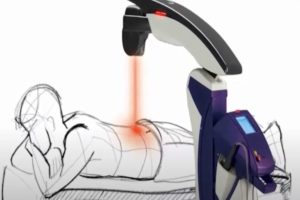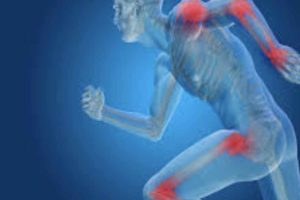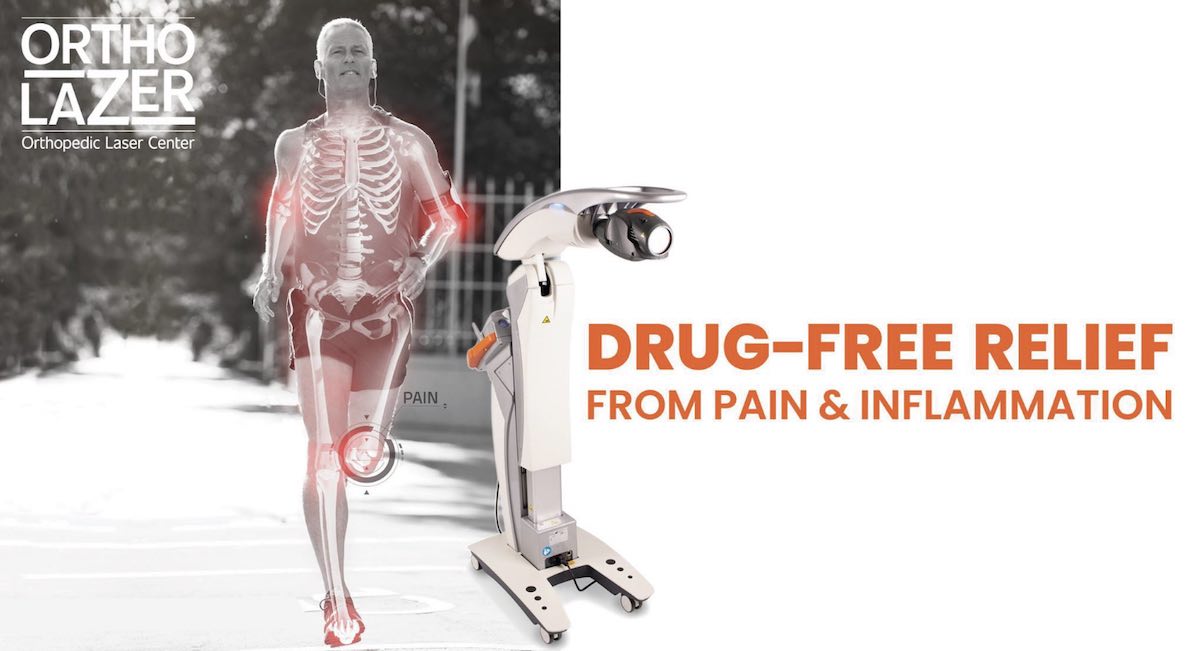There are different treatment options for pain management and other disorders. These include medications, exercise, acupuncture, opioids, narcotics, and surgery, including open and minimally invasive procedures. Low-level light therapy, also known as laser therapy, is an advanced treatment option that uses focused light of specific wavelengths to treat a particular disorder or reduce pain associated with the health condition.
Laser light has high intensity, meaning it can cut steel and reshape precious metals like diamonds. Doctors, surgeons, and other qualified health professionals use laser light therapy to focus on a small area, reduce pain, and repair the damaged cells, tissues, or muscles. In today’s article, we will discuss low-level light therapy (LLLT), uses, benefits, applications, etc. Read on!
What is Low-Level Light Therapy
Research shows that low-level light therapy (LLLT) is a noninvasive treatment method used by health professionals to treat a wide range of diseases, including inflammatory disorders. The laser light has different wavelengths, such as 633nm, 670nm, 830nm, 860nm, and 904nm. A health professional uses a specific wavelength for a particular disorder.
A health professional performs this treatment in their office and requires no anesthesia or sedation. LLLT involves applying laser light to various body parts for several seconds, depending on the light intensity.
A growing body of research evidence has confirmed the biomechanical mechanism of low-level light therapy. It can improve pain and speed up the healing process through bio-stimulation after the patient’s body tissues absorb the light.
So, in simple words, LLLT is a noninvasive technique that uses specialized devices to generate light of specific wavelengths that penetrate the patient’s body to trigger photochemical reactions in damaged or dysfunctional tissue.
LLLT can alleviate pain, decrease inflammation, and accelerate tissue healing from numerous acute and chronic health conditions. The primary goal of this treatment option is to reduce pain and improve function and mobility.
Bear in mind that LLLT is a drug-free, surgery-free therapy that allows physicians to achieve these goals without prescribing medications or performing surgeries. Class IV laser therapy has become the standard of care for a wide range of musculoskeletal disorders, including cervical, thoracic, and lumbar spine pain.
The FDA-approved LLLT is also beneficial for sports injuries. Reputable organizations, such as the WHO, IASP, CDC, FDA, APTA, APA, and others, have endorsed the efficacy of low-level light therapy for musculoskeletal injuries, inflammation reduction, tissue healing, and accelerated recovery during the post-surgery period.
How Does Low-Level Light Therapy Work
During the treatment session, a qualified and skilled health professional uses a special device to generate different wavelengths of light that penetrate the patient’s body. Bear in mind that the professional applies the light to a targeted area. When the body tissues absorb the light, they trigger photochemical reactions at intracellular levels.
Health professionals use laser light with wavelengths between 600nm and 700nm to treat superficial tissues. However, it is crucial to use wavelengths between 780nm and 950nm for deeper penetration. Although the patient feels the light device touching their skin, the procedure is noninvasive, painless, and side-effects-free.
There is no involvement of vibration, heat, or sound. Each treatment session takes a few minutes. Low-level light therapy is also effective for shrinking and destroying polyps, tumors, and precancerous growths.
It can relieve cancer symptoms, remove kidney stores, repair a detached retina, improve vision, treat hair loss problems, such as alopecia, and eases back pain, including cervical, thoracic, and lumbar spine disorders, degenerative disc disease, herniated disc, etc. However, there is a need for more research to confirm this.
Moreover, it reduces pain associated with nerves after open-back or minimally invasive spine surgery. It improves blood vessels function to increase oxygenated blood and nutrient supply to the damaged tissues. LLLT is also a practical approach to reduce swelling in lymph vessels and limit the spread of tumor cells. 
Benefits of Low-Level Light Therapy
Low-level light therapy has numerous applications in the medical field. It is beneficial to patients who experience acute or chronic pain due to sports injuries, car accidents, falls, work-related injuries, or post-surgical pain. Here are a few benefits of undergoing LLLT.
Anti-Inflammatory
Low-level light therapy has anti-edema and anti-inflammatory effects because it triggers vasodilation and related mechanism at intracellular and intercellular levels. Not only does LLLT activates your lymphatic drainage system to drain inflamed areas, but it also reduces bruising caused by inflammation.
Low-level light therapy uses photobiomodulation, which is an essential process triggered when photons of a specific wavelength enter the tissue and interact with mitochondria’s cytochrome-C complex.
As a result, the interaction triggers a series of biological and biochemical events, leading to increase metabolic processes at intracellular and intercellular levels to reduce inflammation and pain.
Analgesic Effects
Unlike narcotics or opioids, LLLT has impressive analgesic effects without causing adverse reactions. The low light of a specific wavelength enters the nerves cells and triggers pain-blocking mechanisms. As a result, these cells do not transmit pain signals to the brain, reducing nerve sensitivity.
As a result, you don’t feel discomfort or pain in the affected area. Likewise, the laser light penetrates deep inside the cells to produce high levels of pain-killing chemicals, such as enkephalins and endorphins, from the brain and adrenal glands.
Tissue Repair and Growth
Tissue repair and cells growth are other benefits of low-level light therapy. The light or beam of photons from the laser device enters the tissues and speeds up cellular production. The photons also increase the energy (ATP) available to the cells, allowing them to use increased nutrients faster. That way, cells can remove waste products effectively and quickly and repair the damaged tissues.
Enhances Vascular Activity
Low-level light therapy increases the production or formation of new blood vessels, such as capillaries around the damaged tissues, to speed up the healing process. These capillaries provide more oxygenated blood and nutrients to the damaged tissues/cells to close the wound quickly.
Besides, it also reduces inflammation and decreases scar tissue formation. Photons penetrated deep inside the cells trigger angiogenesis to carry out vasodilation-related procedures and increase the diameter of capillaries.
Improved Cellular Metabolism
LLLT is an effective procedure that triggers numerous cellular mechanisms, including metabolic pathways and enzymes that provide increased oxygen and nutrients to the damaged tissues through capillaries.
Likewise, LLLT can trigger acupuncture points and muscle points in your body, particularly the spine, without incisions or cuts to relieve discomfort, numbness, tingling sensations, swelling, and pain.
Fibrous Tissue Formation and Nerve Function
Fibrous tissue formation is essential to mitigate the effects of scar tissue. Low-level light therapy reduces scar tissue formation after tissue damage from scratches, cuts, burns, surgery, or any other invasive procedure.
In addition, it improves nerve function in damaged tissues to prevent numbness and reduce the risk of impaired limbs. Photons from the laser device speed up nerves reconnection and trigger various functions to optimize muscle healing.
Stimulated Immunoglobulins
Low-level light therapy has positive effects on your immune system. Photos entering your body stimulate lymphocytes and immunoglobulins. Chromophores in your cells absorb laser light or photons and activate molecular enzymes to start ATP production in mitochondria. The energy produced accelerates the healing process.
Faster Wound Healing
LLLT stimulates fibroblast development in your damaged tissues, leading to the production of collagen proteins that replace old tissues with new ones. That’s why LLLT is an effective therapy or treatment option for post-surgical wound healing.

Low-Level Light Therapy and Pain Management
LLLT is an essential tool or method in pain management. Pain turns your body’s stress response, leading to increase production of cortisol, a stress hormone, and delaying healing, causing clotting dysfunction and overall reduced health.
LLLT allows health professionals to provide their patients with a wide range of options when determining the most sophisticated approach to pain management or injury challenge. It is a unique therapy used as an adjunct to prescription pain medications, a substitute for back pain surgery, pre-surgery, or post-surgery treatment for accelerated healing.
Low-level light therapy is an excellent pain management system and an effective tool for athletic trainers in FIFA, NHL, NBA, MLB, NFL, and Olympic teams. Athletes and sportspeople rejoin their teams quickly after undergoing low-level light therapy for pain relief.
Bear in mind that LLLT is a noninvasive treatment method for inflammation and pain reduction. Health professionals use this therapy as an adjunct or replacement of medications. The FDA has cleared this pain relief treatment, allowing patients to have an effective and side effects-free alternative to drugs and invasive methods.
The average treatment session lasts between five and ten minutes, depending on your health condition that requires treatment. A qualified health professional administers the low light therapy directly to the patient’s skin because the photons can’t penetrate through layers of clothing. Patients feel soothing warmth during the administration of therapy.
Is Low-Level Light Therapy Safe and Effective
The FDA has cleared and approved low-level light therapy devices that adhere to ISO standards, providing patients with the safest noninvasive treatment option. LLLT is an effective and safe alternative to prescription medication and surgery.
Most patients undergo 3-5 short treatments. The laser device works by flooding the patient’s tissues with photons of a specific wavelength. The purpose is to energize cells and tissues to increase blood circulation to the damaged area and reduce pain.
Low-level light therapy allows your tissues and cells to use their own healing powers by triggering a series of reactions in the body. During the treatment, you will feel a soothing warmth that indicates the beginning of a modulated intracellular and intracellular activity, leading to reduced inflammation and pain.
Effective LLLT administration is a direct function of laser light power and dose delivered. A qualified professional knows optimal dose administration to the patient to produce consistent and positive outcomes. LLLT also provides a deeper tissue penetration and provides a dose that results in reproducible effects.
Although the voltage is low, the photons are powerful enough to streamline the treatment times and provide achievable results. Keep in that these lasers have a level of versatility, such as Class-I, Class-II, Class-III, and Class-IV lasers. A health professional uses a specific class depending on the health condition and the intensity of pain.
Is Low-Level Light Therapy Effective for Neuropathy
Most treatment for neuropathy focuses on treating symptoms. On the other hand, LLLT can treat the condition’s underlying cause and manage symptoms by stimulating microcirculation around the nerve fibers.
As a result, the increased blood flow to the nerve tissues heals and regenerates the damaged cells and tissues. Not only does LLLT reduce inflammation and pain, but it also restores normal nerve function.
In addition, LLLT is a painless procedure and can effective mitigate or treat symptoms like burning, tingling, and numbness by suppressing your pain receptors. The long-term effects of this treatment come from increased blood circulation that affects nerve tissue with ultimate healing.
Moreover, LLLT is an effective treatment option for neuropathy, particularly peripheral neuropathy, because it restores balance and sensation in your nerves. Unlike other treatment options that manage symptoms, LLLT is best for symptoms management and complete relief from neuropathy.
How Many Treatments Do you Need?
Low-level light therapy produces quick results. For instance, if you have an acute condition, you will need five or six treatments. On the other hand, if you suffer from a chronic illness, such as lumbar spine pain, you may require eight to twelve treatments.
Bear in mind that these are average treatment sessions. Because each patient is unique, the healing time varies depending on the condition, health status, and the quality of equipment used.
People with lifelong health conditions may undergo one or two follow-up treatments each month. Health professionals have been using LLLT for over three decades. There are no adverse effects reported. Some old injuries or painful symptoms may aggravate for a few days as the body’s natural healing response becomes more active after the treatment.
Will the Treatment Hurt?
Treatment times for this noninvasive and drug-free procedure are between five to ten minutes, depending on your health condition. The treatment time also depends on the size of the area and the depth of photons penetration. Some patients feel a warm effect, which is often soothing.
There is no discomfort or pain associated with low-level light therapy. Many patients with acute and chronic conditions experience pain relief, reduced tightness and tension in muscles, decreased inflammation, better blood circulation, and improved range of motion.
When Can You Begin Normal Activity Again?
The most exciting thing about low-level light therapy is that you can resume your day-to-day activities the moment your leave the clinic. However, it would help if you didn’t overexert yourself for a few days.
The purpose is to ensure the healing mechanisms work effectively and speed up the recovery process. You can perform light exercises to improve your body function. For example, if you have back pain and have undergone LLLT, you can perform spinal exercises to boost the recovery process.
How Much Does it Cost?
Although low-level light therapy is an effective treatment option for inflammatory-related diseases and musculoskeletal disorders, many people ask about the costs before treatment. Some people don’t undergo laser therapy because they think it is not cost-effective. However, this is a misconception.
While the cost of low-level laser therapy depends on the clinic’s location, the health professional’s experience, and the quality of devices used, the average cost ranges between $60 and $250 per session.
We recommend searching for multiple clinics in your local area and compare their offers to choose the one that comes within your budget. Remember, a clinic that offers cheap services may not produce effective or desired outcomes. At the same time, a clinic that costs a lot of money is not a viable option because multiple sessions can destabilize your finances.
Besides, compare the expertise of the doctors and the type of tools or equipment they use in their respective facilities. Search online and look for reviews on third-party websites to see what other people say about the clinic. You can also ask your family members, relatives, or colleagues if they know a qualified, skilled, licensed professional performing LLLT.
Final Words
Low-level light therapy is a practical approach to treat a wide range of inflammatory disorders without undergoing prescription medication treatment or surgery. Thus, it is a noninvasive, drug-free, safe, reliable, painless, and cost-effective treatment option for people with neck pain, back pain, abdominal pain, and knee pain.
It is also a reliable treatment option for elbow pain, carpal tunnel syndrome, and a wide range of other painful conditions. The cost of low-level light therapy varies from clinic to clinic. Make sure you choose a licensed clinic with experienced health professionals.
Likewise, experts recommend selecting a clinic equipped with advanced tools and equipment. Find out whether the clinic has proper Covid-19 protocols employed before you undergo the treatment. The purpose is to protect yourself from getting infected with SARS-CoV-2. Until Next Time!
Contact Us Today
Get in touch with the team at OrthoLazer in Newburgh, NY today to discuss your questions and health issues to discover if OrthoLazer’s M8 Robotic Laser Therapy is the correct treatment for your needs.
We can then book you in to see our specialist pain relief physician at our Newburgh practice that can personalize the program for your specific needs, begin the pain relief process which will have significant impact on improving your quality of life.

